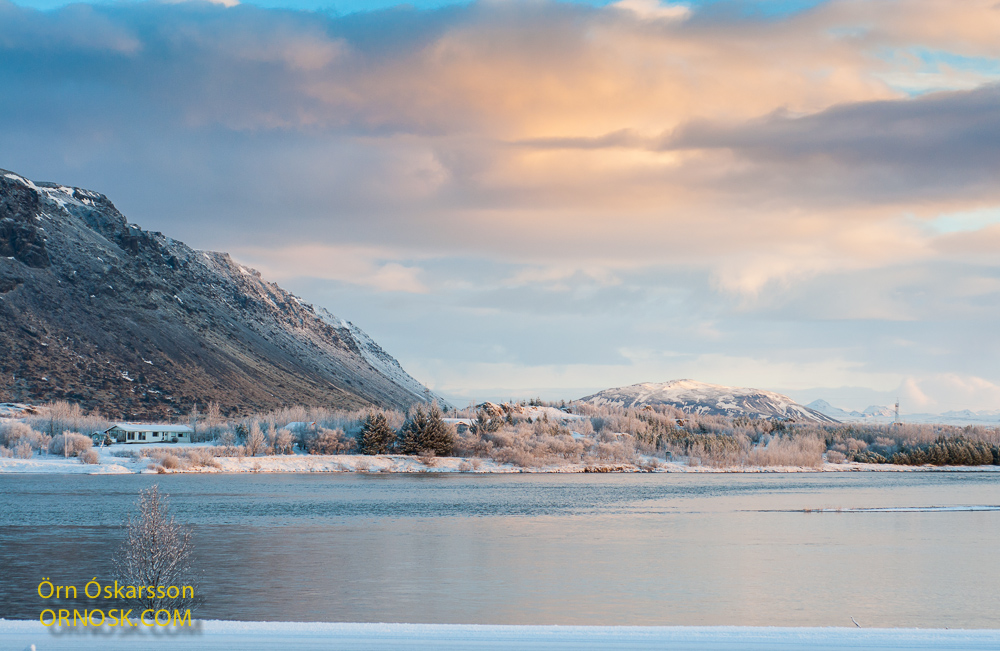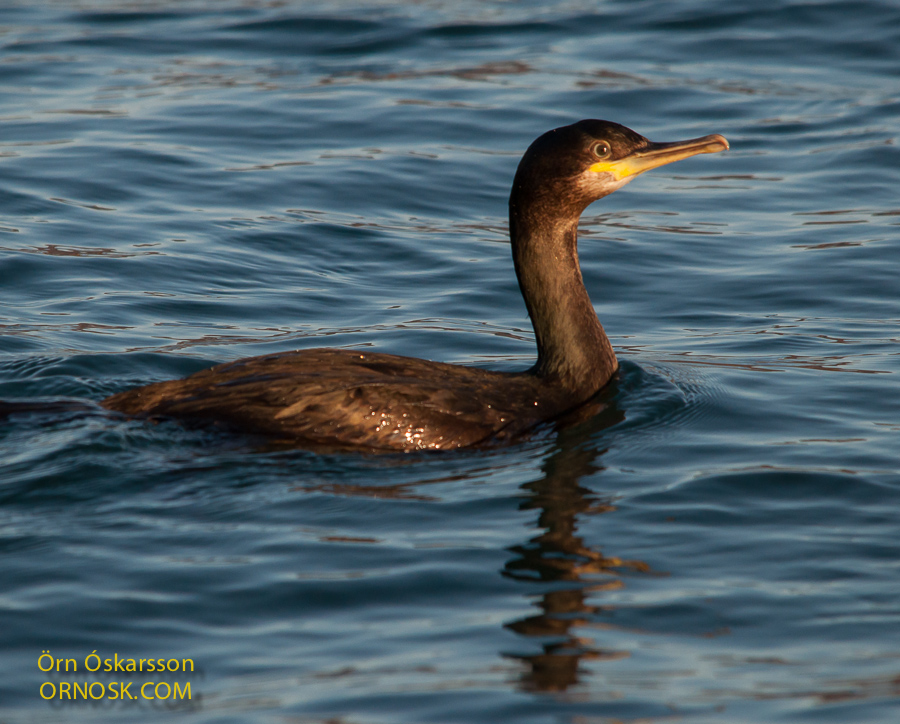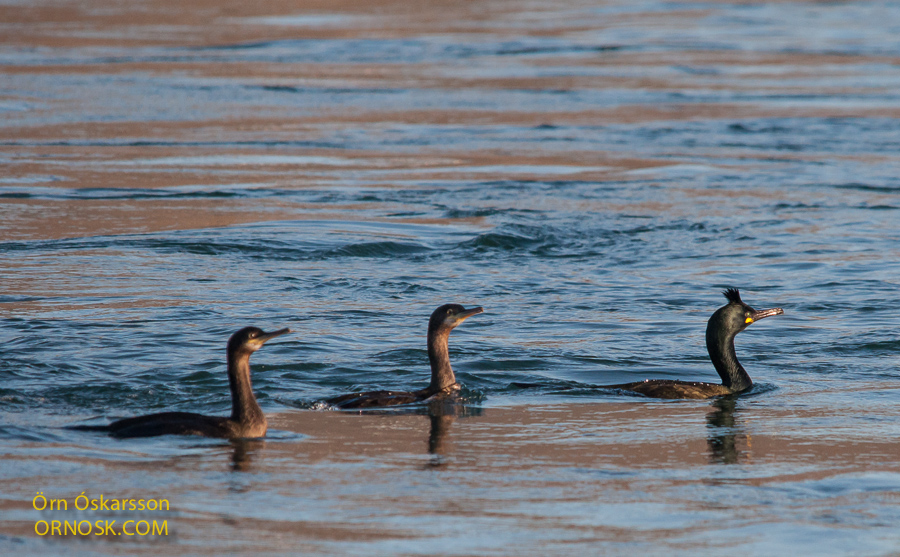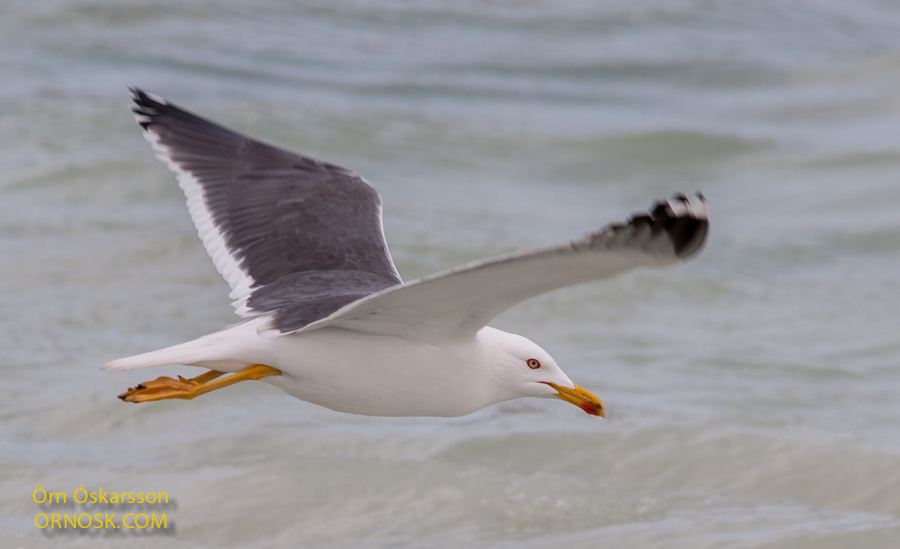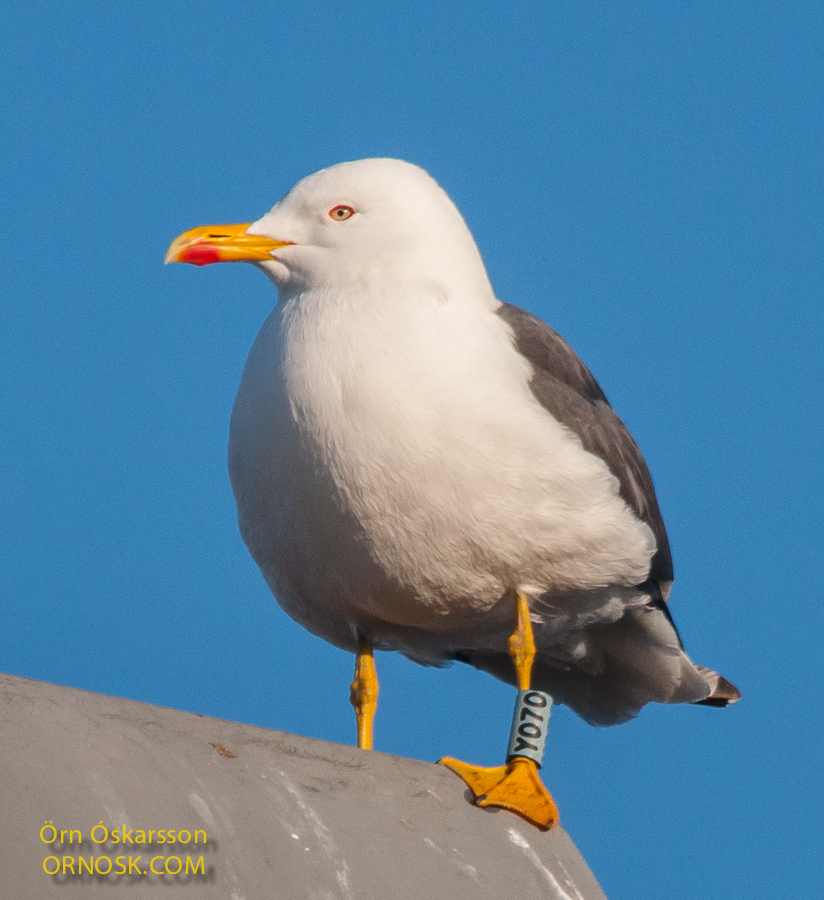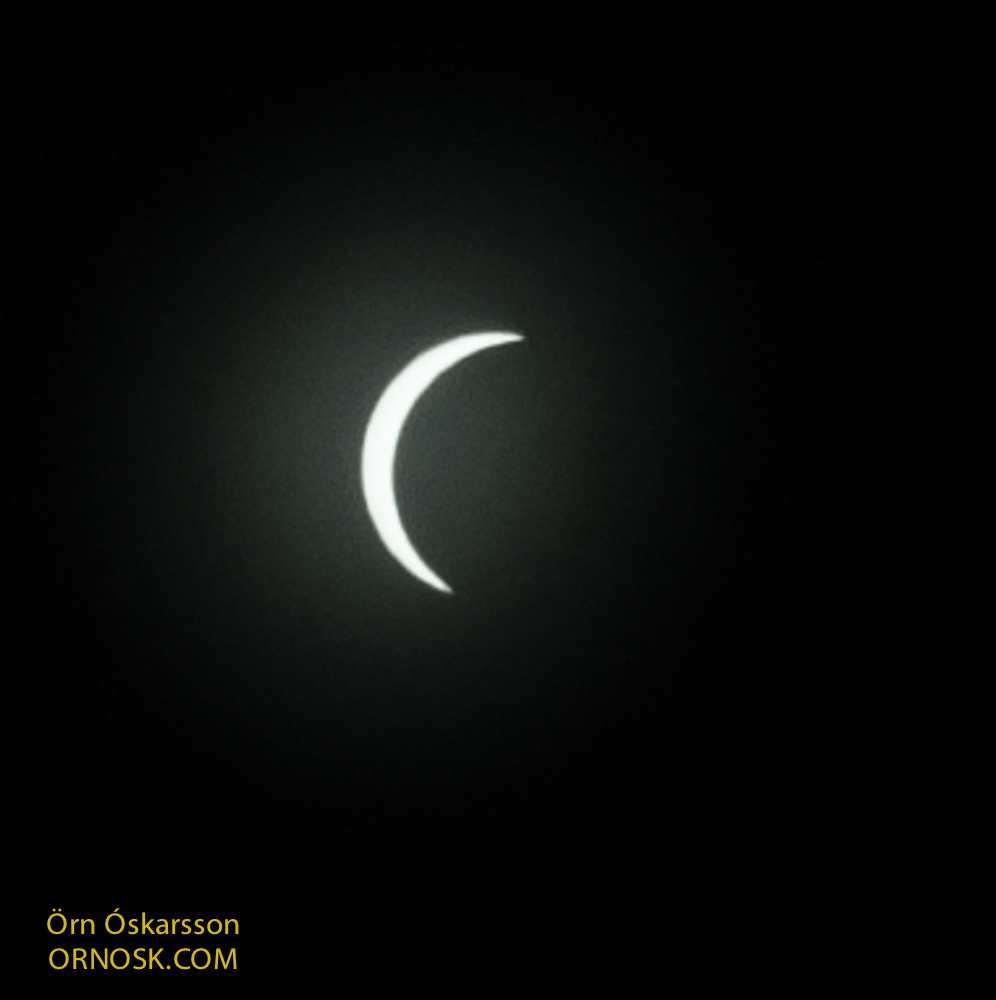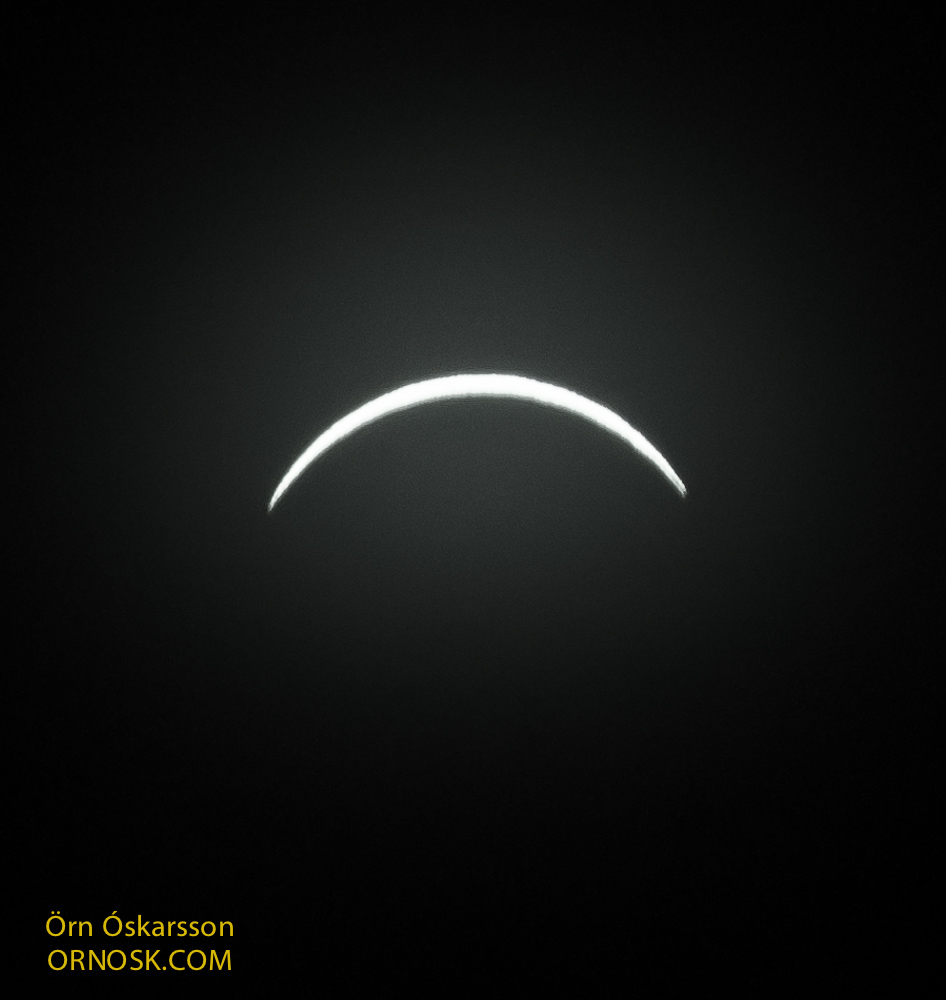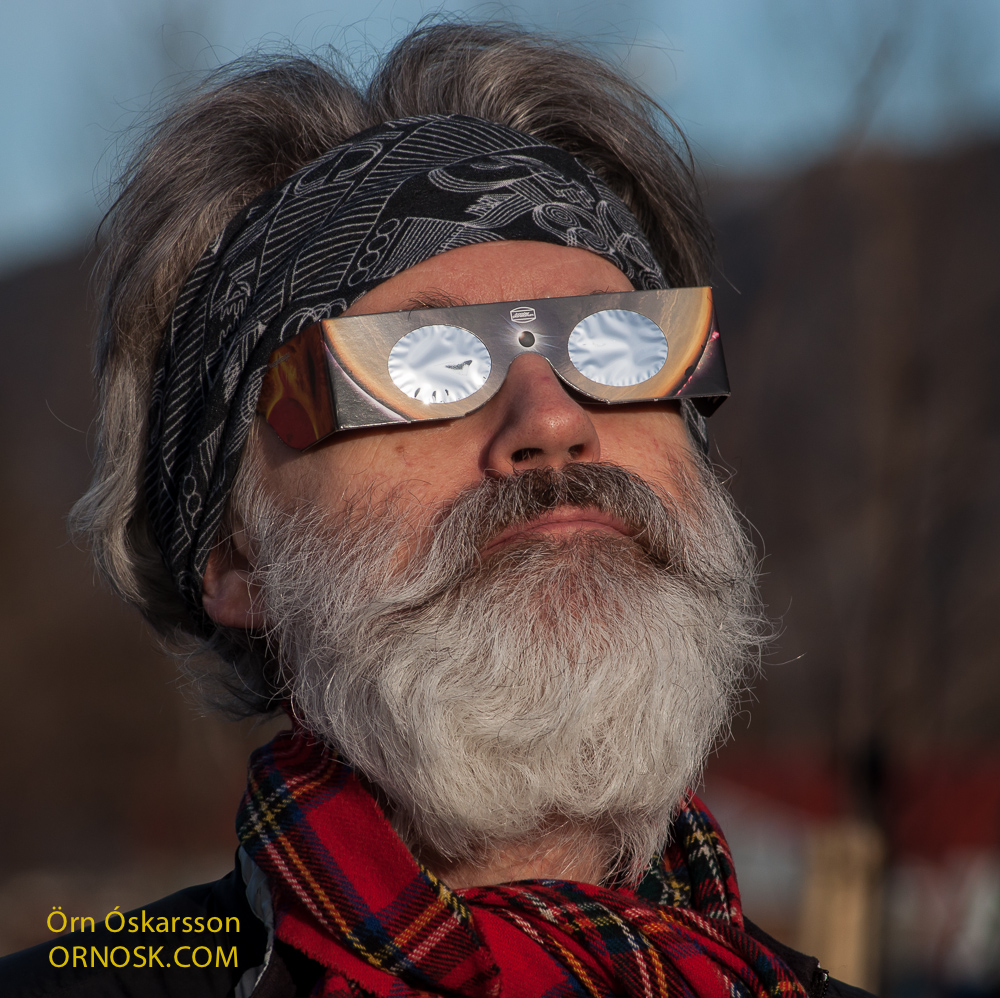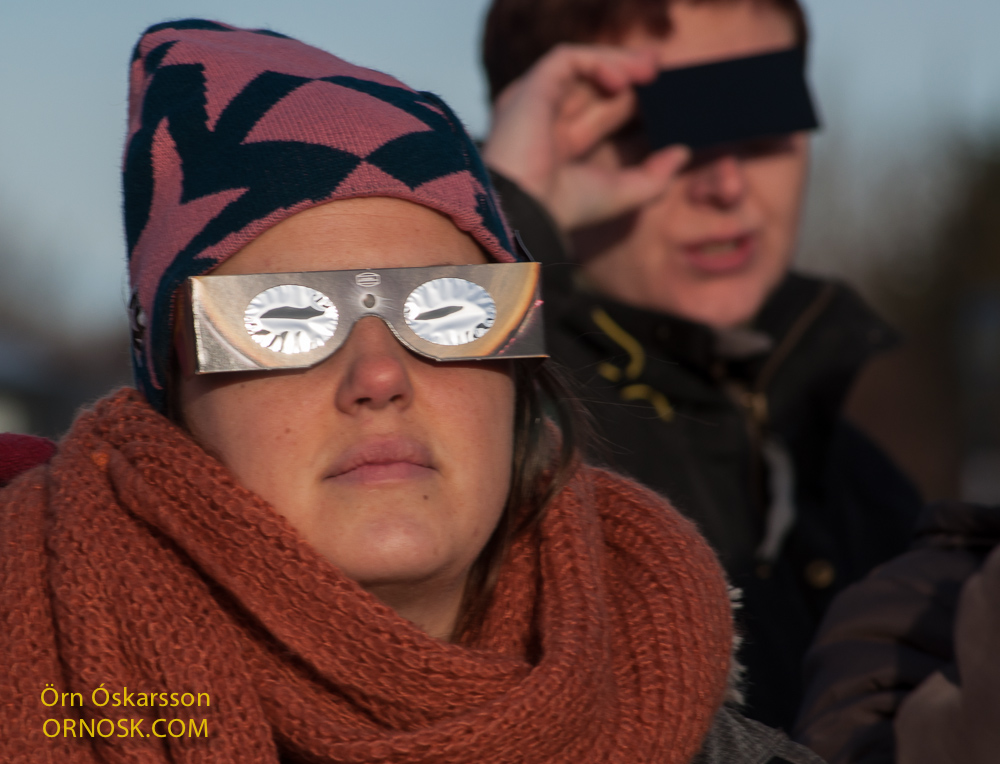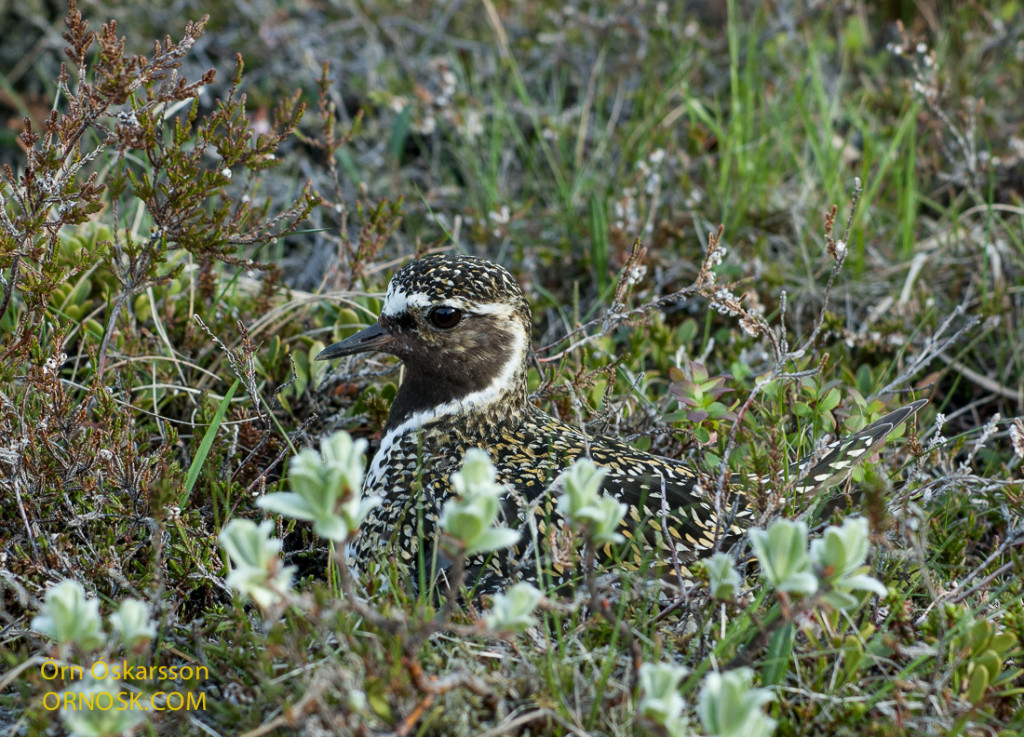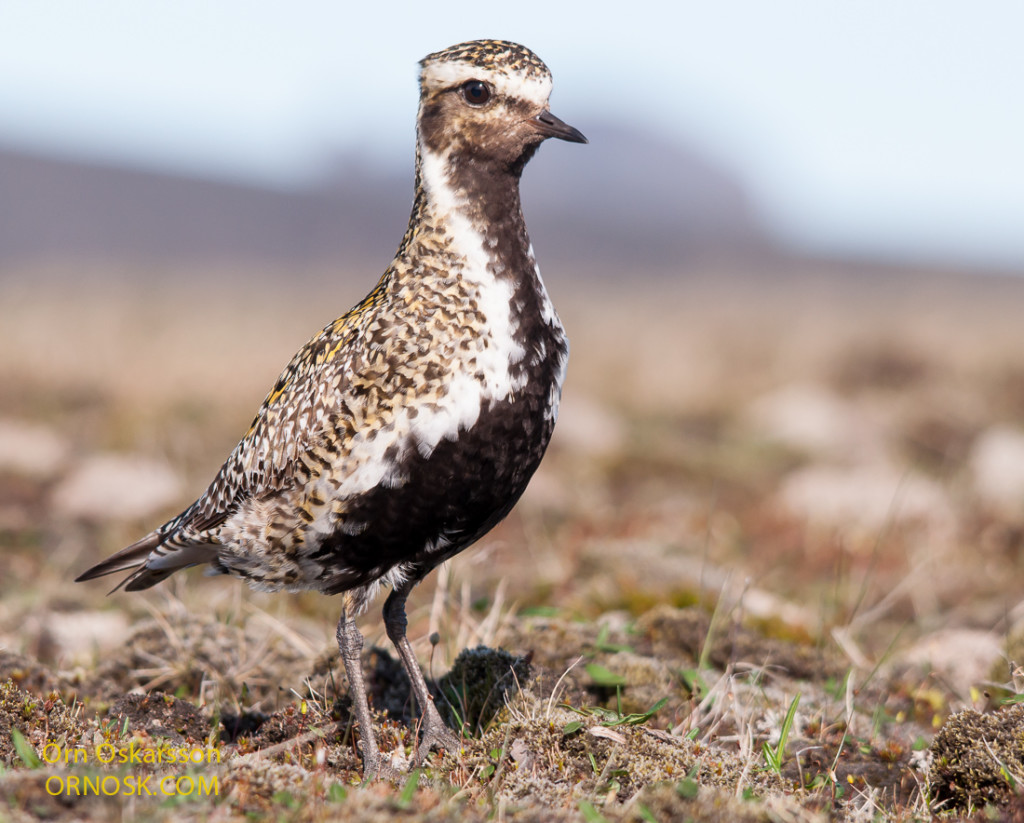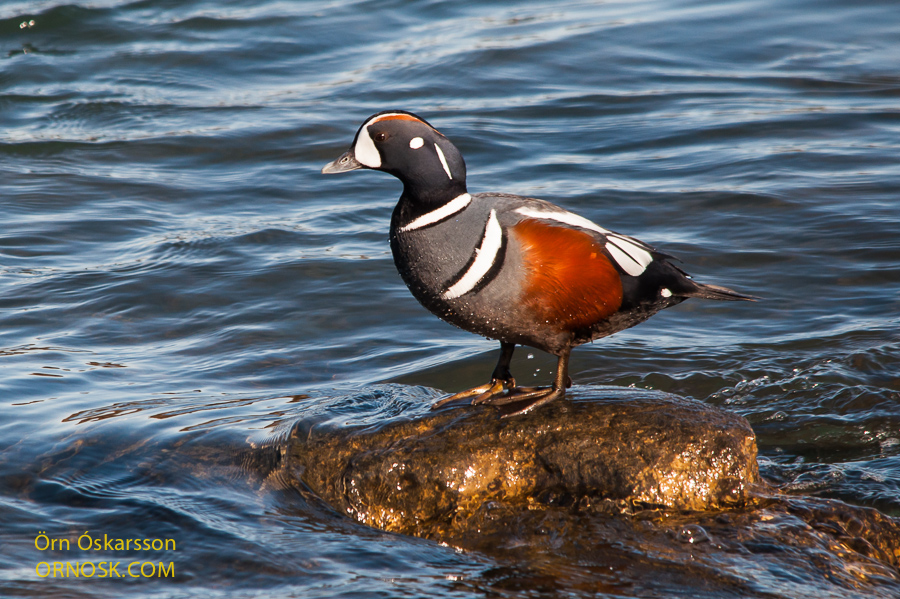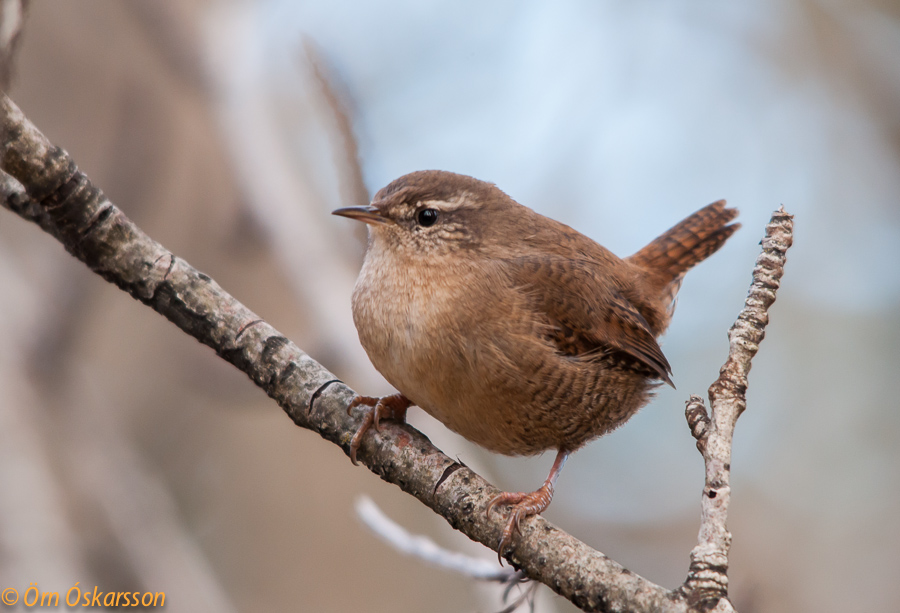This Whooper Swan family, with the grown up birds at the front and the back and the chicks between them, flew over Grímsnes in South Iceland yesterday, probably just newly arrived.
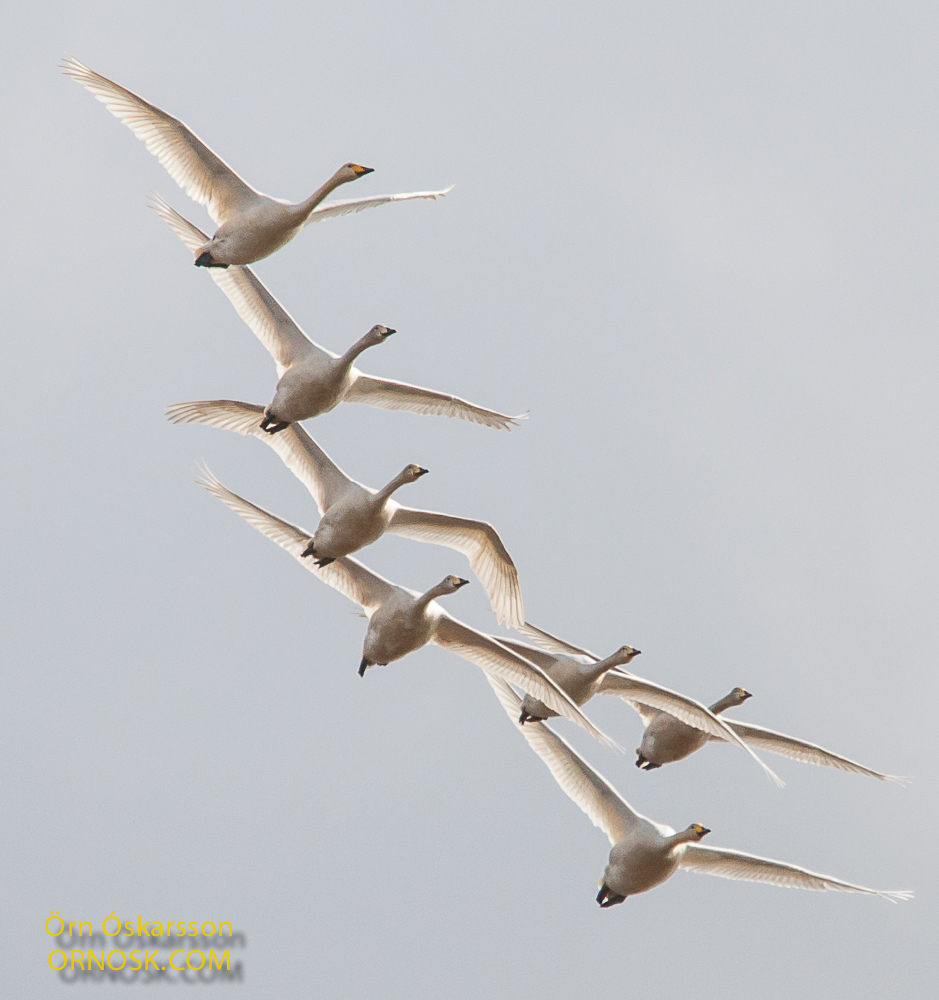
Whooper Swans (Cygnus cygnus) are now coming to Iceland in huge flocks from their winter grounds in the British Isles. They spread over the whole country in smaller groups and pairs seek their old breeding places with their chicks from last year. When it comes to the nest making the parents chase the grown up chicks away. Often fights break out because the chicks do not want to go .

